One of the most challenging operational concerns for airports is waiting times at security checkpoints. For passengers, security checks are usually a stressful moment in their journey through the airport. What if you could book your security slot? What if you could reinvent the passenger experience and make it seamless, stress-free and efficient? These and other challenges were what Recoding Aviation was all about. Six major European airports, led by Amsterdam Airport Schiphol, brought 154 young IT experts to Berlin on 16-18 June to develop new digital tools that improve a wide range of passenger services. Inês Rebelo travelled to Berlin to watch the action unfold.
Some 154 IT brains came from all over Europe to spend two days developing (they call it hacking) new solutions that improve a variety of passenger services. With the support of ACI EUROPE, this event was organised by Amsterdam Airport Schiphol in conjunction with BeMyApp, a startup specialised in business innovation services, along with six major European airports: Munich Airport, Copenhagen Airport, Frankfurt Airport, Swedavia, London Gatwick Airport and Genève Airport. SITA sponsored the initiative and 15 API (Application Programming Interface) partners and two knowledge partners, namely the Delft University of Technology and PASSME, also joined it.
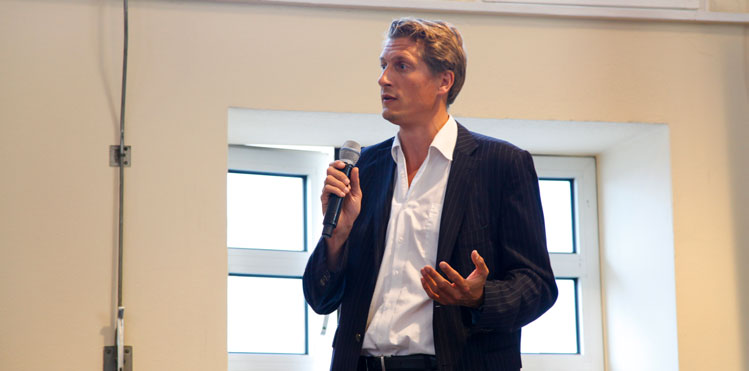
Sjoerd Blum, CIO Schiphol: “Our goal is to shake up the aviation industry.”
Schiphol decided to lead this initiative on the back of a previous successful event. The Dutch airport aims to become the best digital airport. “Our goal is to shake up the aviation industry,” Sjoerd Blum, CIO Schiphol, stated. “We need to share data with others and collaborate. We want to see what we can achieve when we combine the data that we have as aviation partners.”
Passenger service innovation is a key element of the airport business. Recoding Aviation was a good example of how important the passenger experience is for airports. Schiphol and its participating airports gathered 154 young developers, designers and ideas generators to develop innovative solutions that help passengers get to the gate in a smooth and simple way. How? They were asked to use the participating airports and partners’ APIs and datasets, as well as the latest digital innovations, such as robotics, chatbots, wayfinding, artificial intelligence, cloud-based solutions and wearables. “When we open up our APIs and let external people work on them we get new ideas that we can pitch and aim to implement in our airport,” Mary de Groot, Innovator Schiphol, comments. “This ‘hackathon’ is very inspiring not only because of the new ideas that are generated but also because the airports are collaborating with each other and see the real benefit of working together and share knowledge to achieve high-quality digital improvement.”
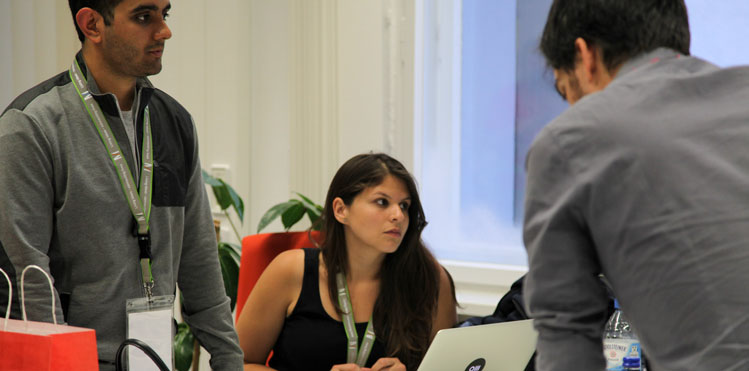
Techies working around the clock on the challenges.
These young techies worked around the clock for two sleepless days on the challenges of this ‘hackathon’ – a concept that is a combination of two words – ‘hacking’ (in a good way) and ‘marathon’ – to describe an intense, non-stop IT competition.
The four challenges, which resulted in 37 projects in total, encompassed all aspects of the passenger journey, consisting of four different moments: “Life before the airport” (7 projects), “Life at the airport” (16 projects), “Life in between airports” (9 projects) and “Life after the airport” (5 projects).
In the “Life before the airport” challenge, the objective was to create cutting-edge solutions that improve the first step of the passenger journey, such as check-in online, flight booking, parking or baggage drop-off before arriving at the airport. The “Life at the airport” challenge required techies to find innovative ways of adding value to the security control, optimising passenger flow, building up a city community of travellers or engaging new travellers. In Challenge 3 (“Life in between airports”), techies were expected to disrupt the transferring process or potentially synchronise the airports’ operations to give the passenger the same travel experience. Challenge 4 (“Life after the airport”) involved simplifying the lost bags reporting system or redefining the hello/goodbye to the extent that we could track the location of our loved ones and find the place where they leave the departure gate.
Over 50 mentors, including airport business and technology experts, were on hand to provide guidance throughout the entire coding time. Jack Loops, Managing Director LocusLab and one of the mentors, stated: “My main objective here is to help these people help people. These developers are able to create something that multiplies its value and has an impact on millions of passengers. As a service industry, we should always create passenger-centric solutions.”
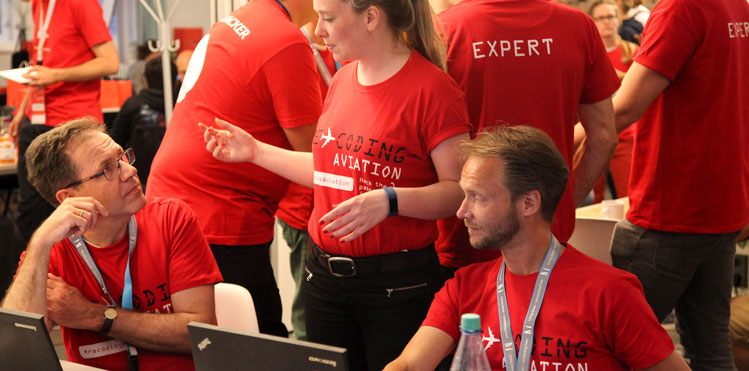
Over 50 mentors were on hand to provide guidance to techies.
Friday, 16 June: Three, two, one… The hackathon is on!
At 17:00, Hub:raum, the incubator of Deutsche Telekom, was the place with the most vibrant techie community in Berlin. This community gathered for the opening, led by BeMeApp and Schiphol. With their inspirational welcoming words, Schiphol and BeMyApp set the scene from the very beginning.
Techies were also inspired by all other six participating airports, who pitched for three minutes. They also highlighted the good inter-airport spirit and the positives of further developing their collaboration to enhance the passenger experience. The overarching message was clearly encouraging: “Amaze us!”
With such a lovely excitement in the air, it was time to stop pitching and to complete team information and projects submission before coding. For this purpose, a platform had been launched in complement to the event website (www.recodingaviation.com) to present all the projects in competition, which could be searchable by type of challenge or API used (airport or partners’ APIs). It also allowed techies to book a meeting with a mentor or to understand more about the airport world (e.g. passengers with special needs, flights, waiting times). In addition, the platform contained a forum that facilitated live interaction between techies and mentors.
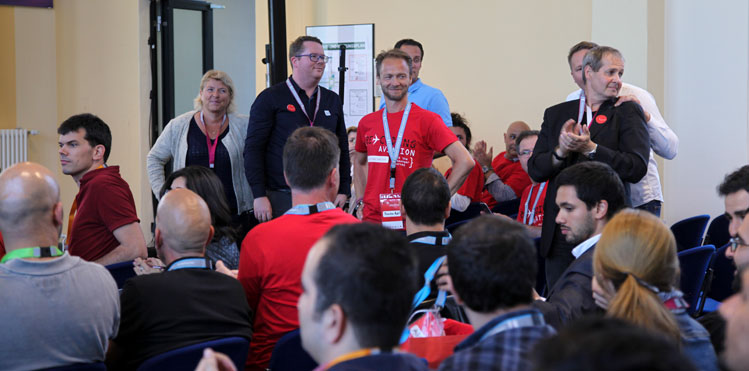
Participating airports prepared for pitching.
Saturday, 17 June: Keeping creative and carrying on hacking
Day 2 was an intense coding time for techies and close mentorship for all experts. However, three side events planned for this day ended up being moments of great relaxation: Twitter selfie with favourite expert in the morning, drone racing at lunchtime and a paper plane race at dinner. Techies also had time to amuse themselves by taking and sharing their team photos.
What made these techies sit together in teams and devote 48h to non-stop coding? Passion for their area of expertise topped the list. Another reason was the willingness to show their talent in the hope of finding a job. “Participating in these events makes you meet new people. When you work as a developer, you are usually a bit restricted to your team. These events allow us to speak with teams that do not work in your specific field and to discover new areas. I am web developer but I do not have a job at the moment,” said Nicolas (HelpAir Team). For others, the participation in this ‘hackathon’ represented an enjoyable experience rather than a real competition. “I used to go to ‘hackathons’ as mentor. Now I am on the other side and it is great! It is one of the best ‘hackathons’ I have ever attended,” Jaime González-Arintero Berciano, Field Engineer (No SurPRICEs Team), stated. His team partner, Emelie Hofland, Data Analyst, could not agree more: “I like anything related to transportation and this ‘hackathon’ is the best I have ever been to. It is not every day that big airports open their data. It is also so cool that airport people are here to answer our questions. I came to have fun.”
This ‘hackathon’ was an exciting opportunity for airports to get feedback on their APIs and to find disruptive ways of recreating the passenger experience. “We released our first API months ago and we thought this would be a good time to try it out with the ‘hackathon’ format – it is our first ‘hackathon’,” Mats Berglind, Innovation Manager Swedavia, commented. “We want to test the quality of our API, to see what we are missing and we also want to be amazed by these creative people.” In the same vein, Pascal Bruckert, Solution Manager, Munich Airport, noted: “We built up the ACI Airport Community Recommended Information Services (ACRIS) standards and want to improve them and get a better understanding with the aim of making a happier passenger experience. This is a good opportunity to get more information from more airports to have these standards implemented.”
For Karen Bender, e-commerce and Marketing Director, Copenhagen Airport, collaboration is paramount: “We do a lot of internal digital innovation and are quite successful. However, we believe we have some barriers within the industry – it is necessary to build a bridge with innovative startups. We can be much stronger by joining our daily competitors and sharing our data.”
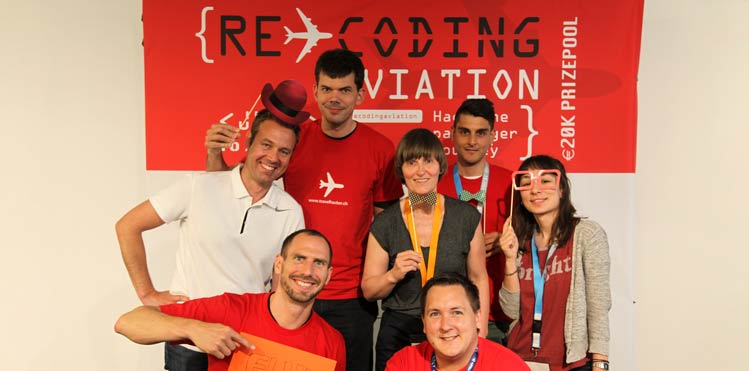
Team photo time!
Sunday, 18 June: After coding come the prizes!
As in the majority of ‘hackathons’, a contest element formed part of this event with a judging panel of seven airport representatives and one partner member. There was a total prize of €20,000 that included a trip to Helsinki to the global winner to attend Slush (the world’s leading startup event), a helicopter flight to the winner of each of the four challenges and several prizes from each partner to their favourite teams.
The end of coding was followed by a first round of judging for the three top teams from each challenge. The teams had to pitch the benefits that their solutions would bring both to the airport and to passengers. At this stage, 13 teams advanced to the second (and final) round of judging. Each of them pitched before the announcement of the winners, who were as follows:
- Grand Prize Winner – Unstuck Team
“We help you get unstuck. Beat the queue with an appointment at the security check! Give the airport more insights about the flow of people and the chance to optimise it! Fewer queues, fewer delays, less stress!” - Challenge 1 – Freemium Security Team
“A freemium tier for fast-track security that enables airports to better manage the flow of passengers and connect with them before they arrive at the airport, while providing passengers a relaxed experience at no cost.” - Challenge 2 – PaxFlux Team
“We permit passengers to book a time slot with guaranteed waiting time through security.” - Challenge 3 – Skillport Team
“Turning airports into knowledge hubs. - Challenge 4 – Landing Pal Team
“A way for travellers to find others to share a ride home with.”
Recoding Aviation secured coverage of over 200 tweets reaching more than 60,000 accounts and ACI EUROPE was one of the top active contributors to increasing its audience with its live tweeting. The good level of attendance, the quality of the projects that were developed and the close collaboration among the participating airports made it a successful event. As Etienne van Zuijlen, Senior Manager Airports Operations, SITA, commented “We can learn from the fact that all these seven leading airports, despite being competitors, came together as partners to open up their APIs. They believed in the cause and they showed us that we can do more by working together and trusting in other people’s ideas.”
Now it’s over to you Schiphol, Munich Airport, Copenhagen Airport, Frankfurt Airport, Swedavia, London Gatwick Airport and Genève Airport: we are looking forward to seeing the next generation of the passenger experience at your airports!
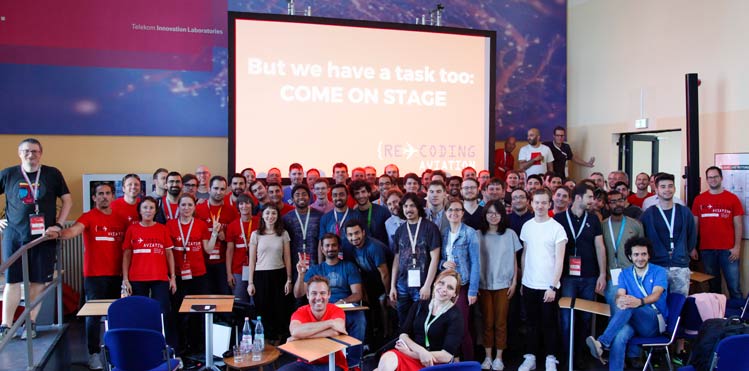
Recoding Aviation got a coverage of over 200 tweets reaching more than 60,000 accounts.







